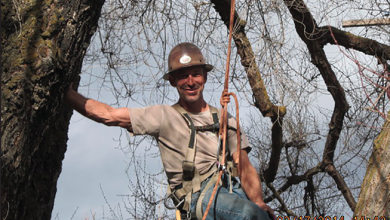Houston, We Have a Problem…
Did you know there are numerous databases that provide statistical information regarding tree failure? Interesting reading, but the data is very site specific.
Ashland is unique insofar as local weather events range from extended periods of drought to heavy wet snotty snow!
This year’s early wet snow wasn’t even that wet, but it took its toll just the same. The big failures (broken stuff) that I witnessed this year were red and silver maples, followed by Monterey cypress, Douglas fir, and grafted pines in general.
The amount of tree failures were not an all time high record or anything, about average for the amount of snow we received.
The biggest number of failures I noted for Ashland for 2021 were quaking aspens of all things! All the aspen failures were identical, failure at ground level, due to decay of the stem/root collar interface. All the aspen failures were trees in a frequently irrigated landscape and all puked during spring and early summer. I guess they just don’t like living below 5000 feet or so…
Usually, willows of every species take the number one spot in wet years, with raywood ashes a close second when we have high winter winds with saturated soils. I remember one year when 28 raywoods got blown over in one night, and the failure at ground level had zero instances due to decay. It was just a crappy root structure that had lost its grip on the soil.
I don’t consider trees dying due to accumulated drought stress as a failure per se, but extremely dry wood isn’t as pliable or flexible as moist wood, and the actual failure rate of “dry” trees goes up when we don’t get the rain we need.
While we are talking about rain, you know, the stuff that falls out of the sky that has not fallen from the sky this year, I have never seen so many conifers bite the dust in one year, like this year!
If you have a conifer or evergreen broadleaf tree that looks a little sad, you really need to break out a hose and give it a good deep soak RIGHT NOW!
A hundred bucks worth of water now may save you thousands in removal bills in the near future…
I saw my first turkey vulture cruise through Ashland on Jan 27 this year and they are never wrong about a long hot summer. They used to show up around the last of April on their northward trek, and every hot dry year they seem to feel it coming, so batten down your hatches…
These next two or three months are the best time to add mycorrhizae to your soil within the root zone of your trees, and this will help with drought stress assuming you have mulched as well.
The fruit tree pruning crunch is on as well, so yes, now is the time!
We will be coming to the end of conifer pruning season early this spring, the first turkey vulture told me so.
As always, plant high and often, and a rain dance couldn’t hurt…



